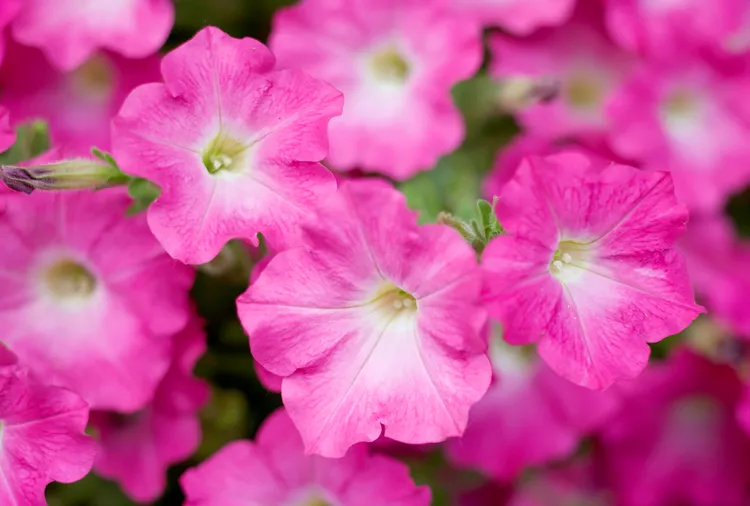With loads of blooms in nearly any color you can wish for, including some that are multi-colored or look like the night sky, petunias are a favorite summer flower for good reason. But are petunias perennials, or do you need to replant them each year to enjoy their stunning flower displays? The answer is yes and no, depending on how cold it gets where you live.
Are petunias annuals or perennials?
Petunias are commonly referred to as annuals, which isn’t strictly correct. Most gardeners typically grow them as annuals and discard them after the summer season. Petunias are not tolerant of frost and are usually only winter hardy in USDA Zones 9–11. Because of this aversion to cold, they are classified as tender perennials—they are perennials, but only in very warm areas. A true annual plant completes its life cycle in one year and then dies.
Categories of Petunias
While we often purchase flats of petunias or hanging basket arrangements based on their color, petunias can also be grouped into five categories based on flower and growth habits.
- Milliflora petunias grow in mounds with tons of small, 1-inch diameter flowers.
- Multiflora varieties are busy and have 2-inch flowers.
- Floribunda petunias sport even larger flowers, at about 3 inches across, and are the midpoint between floribunda and grandiflora varieties.
- Grandiflora, as the name suggests, have the largest blooms of the group, with huge 5-inch flowers. These blooms are a bit more fragile and better suited for sheltered locations where pounding rain and wind won’t reach them.
- Spreading (Wave) petunias are the new kid on the block. They grow in a sprawling or trailing (if in a basket) habit, with stems reaching 4 feet long. Wave petunias are ideal for hanging baskets and will keep blooming and growing without getting leggy.
Growing Petunias as Perennials
As tender perennials, petunias will survive for multiple years if conditions are right. However, the winters are too chilly in many areas, causing the petunias to die in autumn.
Gardeners in frost-free zones may be able to overwinter tender perennials outside and enjoy them again. However, unlike many other perennials, petunias aren’t long-lived. Even when not killed prematurely by freezing weather, they usually only live for about three years. In warm climates, they might self-seed. To grow petunias as perennials, grow them in a frost-free location.
Growing Petunias as Annuals
Petunias are most commonly grown as annuals and composted at the end of the season. While they can be grown from seed, the selection and ease of purchasing young petunia plants at garden centers is hard to beat. A dozen petunias can be planted in 10 minutes, creating almost instant color for the entire season.
When selecting petunias, consider the growth habit information on the tag. For garden beds and regular planters, choose erect-growing varieties with short stems that retain their upright shape. For hanging baskets or achieving that large, overflowing look in a container, choose trailing or sprawling varieties with long, vining stems.
While some newer hybrids are self-cleaning, meaning the old flowers fall off by themselves, many varieties must be deadheaded to encourage continued blooming. If your plans include a hanging basket that will be hard to reach, look for varieties that don’t need deadheading.
Tips for Growing Petunias
Nothing says summer like a container or hanging planter overflowing with brightly colored petunias. Because these plants come in a rainbow of hues, it's easy to create themed designs with them. Want a flower border or basket with your alma mater’s colors, for example? You can do it with petunias.
Once you've purchased colorful flats of petunias at your local garden center, there are a few things these plants require to continue blooming profusely until frost:
- Full sun. Petunias need a sunny spot. While they tolerate partial shade, the less sun they get, the fewer blooms they put out.
- Good drainage. Potting soil with good drainage is all that’s needed for petunias in containers. If you are planting them in the ground, a well-drained spot with some compost worked into the soil is best.
- Regular watering. Keep your petunias evenly moist but not soggy. Especially during the heat of summer, make sure to provide enough water to your plants so that they never wilt.
- Plenty of nutrients. A slow-release fertilizer mixed into the soil at planting time will help petunias reach their peak flower power.




















